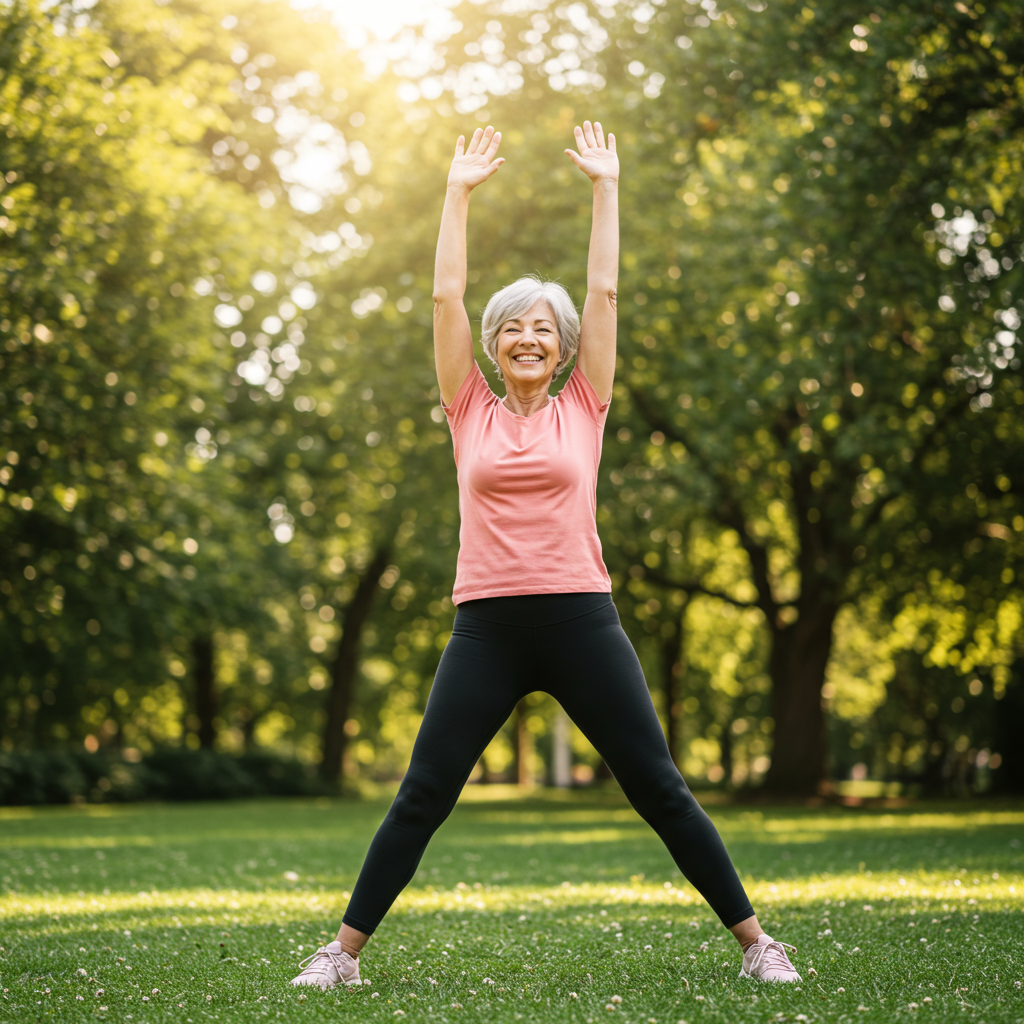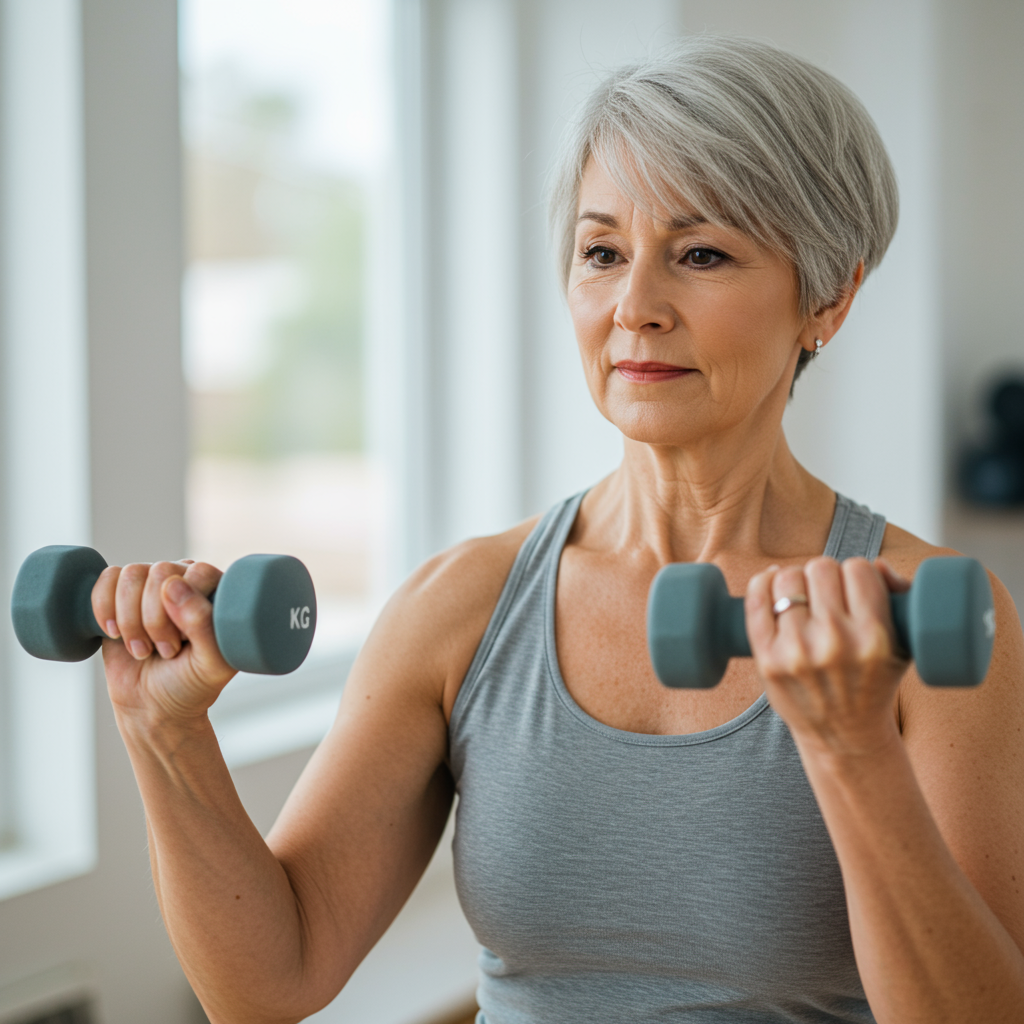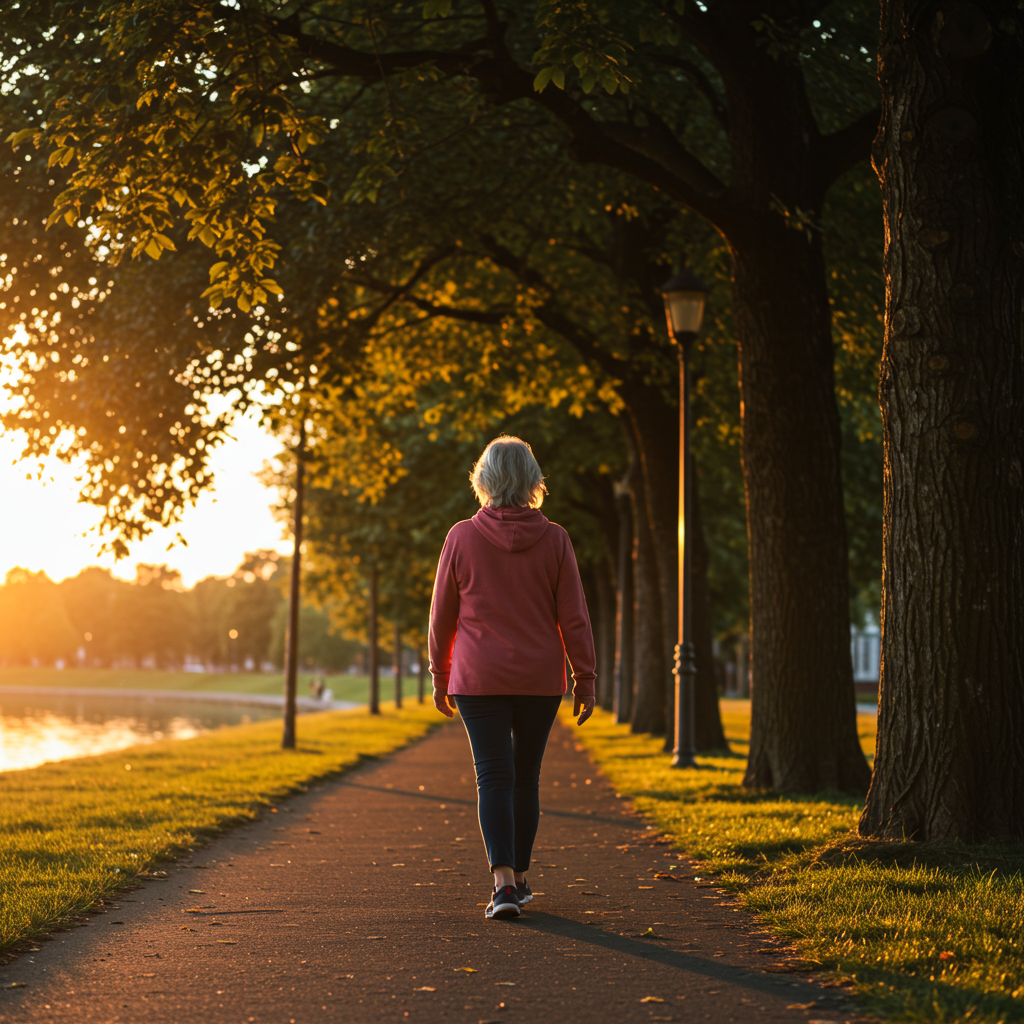
Table of Contents
Introduction
Staying fit and active is a transformative journey that becomes even more vital as we age, especially for older women seeking to maintain their independence and quality of life. Have you ever wondered how simple daily movements and thoughtful exercise routines can protect your health, boost your energy, and keep you living life on your own terms? This guide to fitness for older women is designed to inspire and empower you to embrace strength and vitality, no matter your age.
As we grow older, our bodies experience natural changes such as decreased muscle mass, reduced bone density, and shifts in metabolism. These changes can challenge everyday activities, making it critical to adopt fitness routines that counteract these effects and promote wellness. According to recent studies, older adults who engage in regular physical activity have a dramatically lower risk of chronic diseases such as heart disease, diabetes, and osteoporosis. Beyond physical health, exercise also plays a crucial role in cognitive function, emotional wellbeing, and social engagement—factors essential to a fulfilling, joyful life.
Older women often face unique barriers to fitness. Concerns about injury, uncertainty about how to start, or feeling overwhelmed by the options can deter even the most motivated. However, fitness at this stage of life is about more than just appearance; it’s about enabling long-lasting mobility, preventing falls, enhancing mood, and increasing resilience. Many women find renewed confidence and joy through tailored workouts designed with their needs in mind. If you want to explore practical steps and effective exercises crafted specifically for women over 50, consider this insightful fitness guide for women over 50, which covers balanced workouts and nutrition essentials.
Fitness for older women transcends the physical realm to touch every aspect of life. It fosters a sense of independence, allowing you to engage in activities you love without fear or limitation. Imagine gardening, traveling, playing with grandchildren, or simply enjoying a peaceful walk with ease and strength. By starting a thoughtfully designed fitness routine, you not only increase longevity but also improve the quality of each day. As the global population of older adults continues to grow, the importance of empowering women with knowledge and tools for staying strong and healthy has never been clearer.
What You’ll Learn in This Guide
This comprehensive guide will equip you with the essential knowledge to begin or enhance your fitness journey confidently. We’ll cover several key areas important to older women seeking to improve strength, balance, and overall health.
- Understanding the Benefits of Fitness: Discover how staying active supports your physical health, mental clarity, and emotional resilience. Learn why regular exercise is a powerful tool for preventing injuries and chronic illnesses.
- Exploring Recommended Types of Exercises: Find out which exercises are most effective for building muscle, improving cardiovascular health, and enhancing flexibility and balance. We’ll highlight exercises suited to your level and goals.
- Starting a Fitness Routine Safely: Gain practical tips for initiating an exercise habit that respects your body’s needs. Learn the importance of warm-up and cool-down sessions, setting realistic goals, and pacing yourself to avoid burnout.
- Preventing Injuries and Knowing When to Seek Help: Understand common injury risks and how to avoid them by using proper form and equipment. We’ll also discuss signs that indicate when it’s time to consult a healthcare professional to ensure your fitness approach remains safe and effective.
In the sections ahead, we’ll delve into the specifics of each of these areas, providing evidence-based advice and encouraging insights tailored just for you. Whether you’re returning to fitness after a hiatus or beginning for the first time, the information here is designed to empower your journey to greater health and vitality.
We will guide you through various types of exercises suitable for older women, including strength training to maintain muscle mass and bone density, cardiovascular workouts to enhance heart health, and flexibility routines to improve balance and prevent falls. Each type plays a unique role in promoting a holistic approach to fitness, ensuring you build a robust foundation for long-term well-being.
Additionally, you’ll learn how to start exercising safely with practical strategies, including realistic goal-setting, proper warm-up and cool-down techniques, and the importance of listening to your body’s signals. We’ll share essential tips for injury prevention by focusing on correct movement patterns and using appropriate gear tailored for your needs. Lastly, we’ll highlight health markers and symptoms that suggest it’s time to consult your healthcare provider before or during your fitness activities.
Fitness is not a one-size-fits-all concept, especially for older women who may have unique health considerations and lifestyle needs. This guide is crafted to honor your individuality and encourage you to take confident, informed steps towards a stronger, healthier you. Let’s embark on this empowering journey together—your body, mind, and spirit will thank you for it.

Maintaining fitness as an older woman is essential for preserving health and independence, enabling you to continue enjoying life fully and actively. Exercise contributes to improved strength, balance, and overall wellbeing, which are critical as the body naturally ages. Beyond physical benefits, regular activity supports mental health, helps manage chronic conditions, and fosters emotional resilience. In this discussion, we will explore the types of exercises recommended for older women and the safest approaches to starting and sustaining a fitness routine. This conversation aims to empower and encourage healthy lifestyle decisions tailored to the unique needs of older women, enhancing quality of life and reducing risks of injury or illness associated with inactivity.
Types of Exercises Recommended for Older Women
Choosing the right types of exercise is key to maximizing health benefits while minimizing risk. For older women, a well-rounded fitness program incorporates strength training, cardiovascular activity, and flexibility and balance exercises. Each type targets specific health needs: strength training helps counteract muscle loss and bone density decline; cardiovascular workouts improve heart and lung function; and flexibility and balance exercises reduce fall risk and maintain mobility. These combined efforts support not only physical health but also independence in daily activities. Initiating this approach with techniques adapted to individual capabilities ensures sustainable progress without undue strain or injury.
Strength training is particularly beneficial, as it helps maintain muscle mass and bone density, which naturally diminish with age and can lead to frailty or osteoporosis. Using light weights, resistance bands, or body-weight exercises tailored to comfort and fitness level is effective. Cardiovascular exercises such as walking, swimming, or cycling enhance endurance and heart health, supporting energy levels and metabolic function. Finally, flexibility and balance exercises, including stretches and activities like yoga or tai chi, promote joint health and stability, directly preventing falls — a major concern for older adults.
Key Aspects of Recommended Exercises
Here are important elements to consider in each exercise category to achieve balanced fitness and long-term benefits:
- Strength Training: Focus on controlled, gradual increases in resistance to safely build and maintain muscle and bone strength. Proper form is critical, and sessions should include exercises targeting major muscle groups. Modifications for joint issues or arthritis may be necessary, ensuring comfort without sacrificing effectiveness.
- Cardiovascular Exercises: Engagement in moderate-intensity aerobic activities for at least 150 minutes per week is ideal. Low-impact options reduce joint stress and can be adapted to varying fitness levels. Consistency over time improves heart function and reduces risks of cardiovascular disease and diabetes.
- Flexibility and Balance: Regular stretching routines increase range of motion and reduce stiffness. Balance exercises such as standing on one leg or practicing stability movements help prevent falls. Integrating these practices into daily routines enhances coordination and mobility.
- Adaptability and Progression: Monitoring progress and adjusting intensity, duration, and type of exercises is important. Listening to your body and avoiding overexertion fosters safety and motivation to continue long term.
Tips for Starting a Fitness Routine Safely for Older Women
Beginning a fitness program later in life can feel intimidating, but with proper guidance and realistic planning, it is both achievable and rewarding. Safety is paramount to prevent injuries and maintain motivation. This includes consulting healthcare providers before beginning, especially if there are existing health conditions, and setting attainable goals to build confidence gradually. Warming up and cooling down are essential components of every session to prepare the body and aid recovery. These steps mitigate risks and facilitate smoother transitions into an active lifestyle.
Older women should approach new exercise routines mindfully, prioritizing consistency over intensity. Starting with short sessions and low impact activities reduces the chance of strain while establishing a foundation for endurance and strength. Keeping track of progress while celebrating small achievements enhances motivation. Support from fitness professionals or group classes designed for older adults can offer guidance, social interaction, and encouragement. Gradual increases in the complexity and duration of exercises help build capability safely. Remaining attentive to physical signals such as pain or excessive fatigue protects against injuries and sustains long-term engagement in fitness.
Important Considerations for Safe Routine Initiation
Key points to keep in mind when initiating a fitness habit include the following practical strategies:
- Consult Healthcare Professionals: A medical evaluation ensures readiness for exercise programs and identifies any necessary precautions or modifications based on individual health status.
- Set Realistic Goals: Defining clear, achievable goals helps maintain focus and provides a sense of accomplishment. Goals may include improving strength, balance, or simply increasing daily movement.
- Warm-Up and Cool-Down: Engage in gentle warm-up activities to increase blood flow and prepare muscles. Cooling down with stretching helps prevent stiffness and aids recovery after exercising.
- Listening to Your Body: Pay attention to discomfort or unusual symptoms during or after exercise. Rest and adjustments are important to avoid injuries, ensuring exercise remains a positive experience.

Conclusion
In summary, maintaining fitness is an invaluable pursuit for older women aiming to preserve their strength, independence, and overall wellbeing. The journey through aging brings natural physical changes such as decreased muscle mass, reduced bone density, and slower metabolism, all of which can impact everyday functionality and vitality. However, by embracing a tailored fitness routine that incorporates strength training, cardiovascular exercise, and flexibility and balance work, older women can effectively counteract these changes. Not only does regular exercise build physical resilience, but it also nurtures mental clarity, emotional stability, and social connection — all critical components of a fulfilling life during the years ahead.
It’s clear that the benefits of fitness extend far beyond appearance or simple movement; staying active empowers older women to confidently engage in daily tasks like walking, gardening, or even playing with grandchildren without fear of injury or fatigue. Combining moderate strength work with light cardio elevates heart and lung health while stimulating metabolism and preserving muscle, which naturally diminishes with age. Adding balance and flexibility exercises reduces the risk of falls and enhances mobility, enabling smoother, safer movement. Together, these elements form a holistic approach to health that supports longevity and a vibrant quality of life.
Starting a new fitness routine can feel daunting, but setting realistic goals and pacing progress thoughtfully is key to long-term success. Prioritize warm-up and cool-down activities to prepare your muscles and aid recovery, and always listen carefully to your body’s signals to avoid overexertion or injury. Using appropriate equipment, maintaining proper form, and consulting healthcare professionals when needed further protect your safety. Remember, consistency matters more than intensity; even gentle daily movement offers significant health returns and builds lasting habits that become part of your lifestyle.
To embrace these principles, consider integrating simple activities like short walks, light weight exercises, or gentle stretching into your daily routine. Celebrate each milestone, however small, as these victories build confidence and motivation to keep moving forward. Over time, you may find yourself enjoying new activities that uplift your spirit and connect you with others — from yoga classes to tai chi sessions, or community walking groups. The key is continuous, mindful movement that respects your body’s needs and adaptation pace.
In closing, staying fit as an older woman is both an investment in your present wellbeing and a gift to your future self. It fosters autonomy, allowing you to savor everyday joys and meet life’s challenges with grace and strength. By committing to a sustainable fitness practice, you empower your body, mind, and spirit to thrive. Embark on your fitness journey today with confidence, knowing that every step you take enhances your health, happiness, and independence for years to come.
Frequently Asked Questions
-
What exercises are best for older women?
- A balanced mix of strength training, cardiovascular workouts, and flexibility and balance exercises are ideal. These improve muscle mass, heart health, and mobility safely.
-
How often should older women exercise?
- Older women should aim for at least 150 minutes of moderate-intensity aerobic activity per week, combined with strength training twice a week, adjusting based on individual ability.
-
Is strength training safe for older women?
- Yes, when done with proper technique, appropriate weights, and progression strategies, strength training is safe and beneficial for maintaining muscle mass and bone health.
-
Can exercise help with osteoporosis?
- Absolutely. Weight-bearing and resistance exercises stimulate bone formation and slow bone loss, helping manage and prevent osteoporosis effectively.
-
What are the signs of overexertion?
- Symptoms include excessive fatigue, dizziness, persistent pain, shortness of breath beyond normal exertion, and irregular heartbeat. If experienced, rest and consult a healthcare provider.
